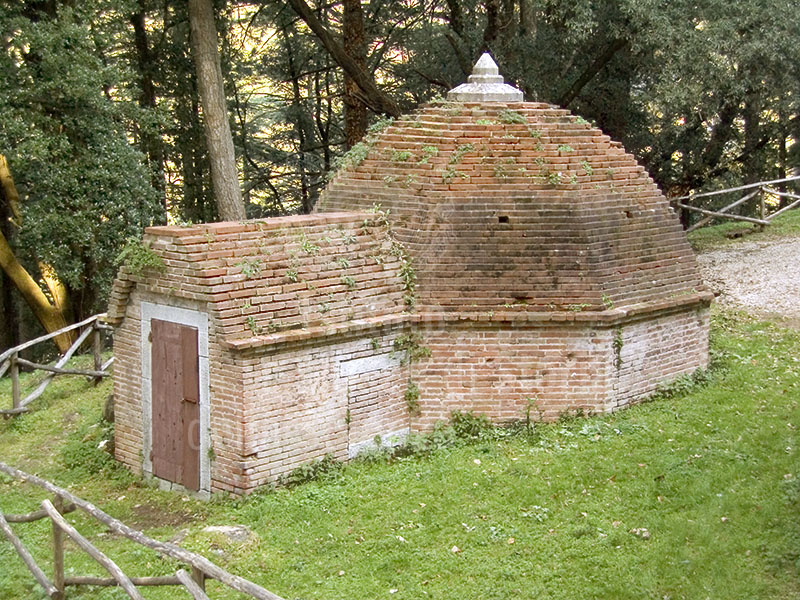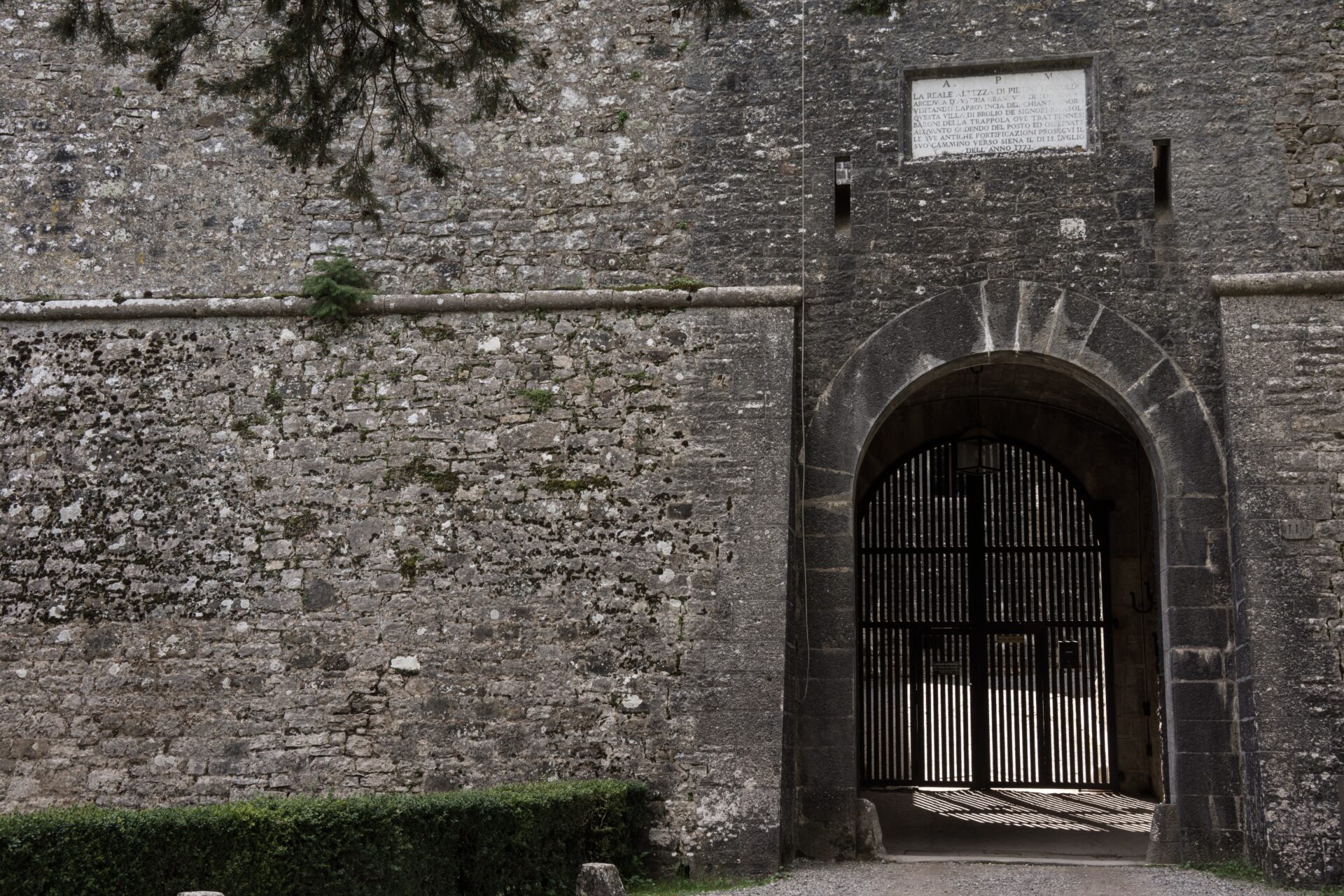
The Historic Icehouse of Castello di Brolio
18 October, 2024Among the fascinating historical features just outside the walls of Castello di Brolio stands a curious octagonal brick structure topped with a semi-dome made of pietra serena stone: it is an icehouse, dating back to the 19th century. This remarkable structure provides a tangible example of how natural cold was used to preserve food long before the advent of mechanical refrigeration.
As early as the 16th century, Italian aristocratic courts—including that of the Medici family in Florence—embraced the growing fashion for enjoying sorbets and ice creams, which required ice for storage. This trend spread among Italian and French nobility, making icehouses an essential feature of noble estates. Over time, these icehouses were used not only for keeping desserts chilled but also for preserving all perishable foods, especially meat and fish. They were typically built in shaded gardens or surrounded by trees to help maintain cool temperatures. Ingenious engineering solutions, such as double walls for enhanced insulation, further contributed to the effectiveness of these structures. Ice was collected from lakes or rivers in winter, transported, and layered with insulating materials like straw, rice husks, or leaves to prevent it from freezing into a single block, allowing it to be used gradually over time.
At the Brolio icehouse, access to the ice chamber was via a corridor with a barrel-vaulted ceiling, which helped prevent warm air from entering—an essential design feature for preserving the cold inside. While initially serving the needs of the Ricasoli family, the icehouse’s strategic location just outside the castle walls and near a carriage road suggests that it was also used to distribute ice to the surrounding area, meeting growing local demand and supporting the development of the regional economy.
After its original function came to an end, the icehouse was briefly repurposed as a storage facility—an outcome shared by many historic icehouses—before eventually being preserved as part of the cultural heritage of Castello di Brolio.
To learn more about this and many other stories, visits to Castello di Brolio are available until December 23rd. You can book a tour at the following link https://visit.ricasoli.com/en . Before or after the tour, guests can enjoy seasonal delicacies like mushrooms and truffles at the Osteria di Brolio, or stop by the Agribar, where Ricasoli’s renowned wines and extra virgin olive oil are available.









